For OFC 2023, Broadcom is talking co-packaged optics. That includes a new Broadcom Tomahawk 5 Bailly chip at 51.2Tbps speeds. With the need to decrease bits/ joule costs within the datacenter while also increasing speeds and reliability, co-packaged optics switches are seen as a potential step function innovation. That is why Broadcom’s project is so exciting.
Broadcom Tomahawk 5 based 51.2T Bailly Co-Packaged Optics Switch Shown
Here is the OFC 2023 announcement of the new co-packaged optics chip. This is a Broadcom Tomahawk 5 51.2Tbps Switch Chip with eight 64-channel silicon photonic engines onboard.
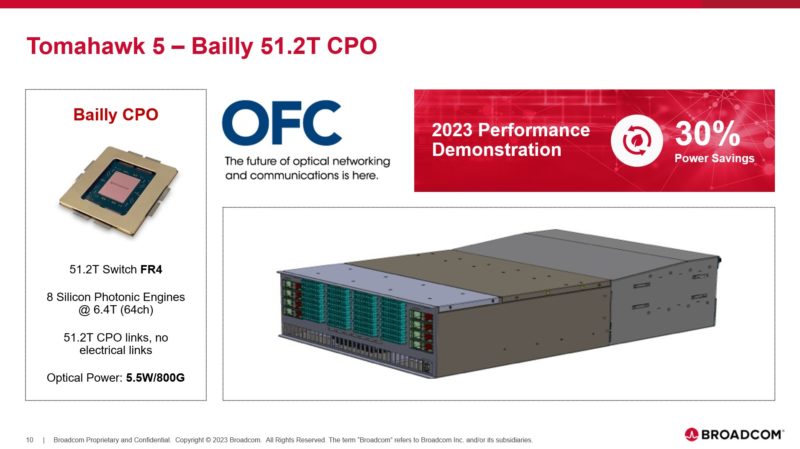
This new chip is able to power 800Gbps of traffic at 5.5W by reducing the need to electrically drive signals to pluggable optics at the front of the switch. For some frame of reference, the Tomahawk 4 Humboldt 25.6T co-packaged optics platform was ~6.4W for a 800Gbps link.
We saw the Broadcom Tomahawk 5 at OCP Summit 2022. The major advancement here is co-packaging the optics. One of the major challenges with removing pluggable optics is that the status quo is easy to service and change. For example, if a longer link is needed, a longer-range optic can be inserted. For a shorter-range run, a DAC or an AOC can be used.
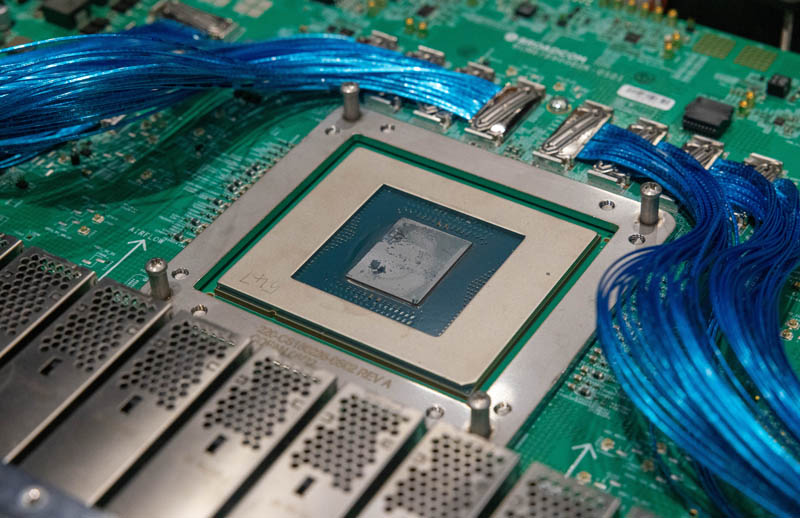
We have already seen companies like Intel and AMD discuss the need for co-packaged optics on chips in the future. We even covered this in our piece:
We have been watching the co-packaged optics space for some time. Just before the pandemic shut everything down, we snuck into an Intel lab to see its Hands-on with the Intel Co-Packaged Optics and Silicon Photonics Switch, although Intel has now shuttered its Barefoot unit.
Hopefully, this is an area we get hands-on with soon.
Final Words
Most in the industry see that the power savings of CPO switches and even chip-to-chip interconnects will happen. Broadcom clearly has a strategy it is executing on its industry-standard switch chips like the Tomahawk line.
For those wondering, we have a traditional 25.6T class switch in the lab that we are almost done with the review for. Aside from the $1500 optical modules for the switch and the ConnectX-7 cards, the sheer power consumption of the pluggable optics in a larger switch like that is notable. It makes a clear case of why we need CPO switches in the future. The big question is when we will see the crossover.

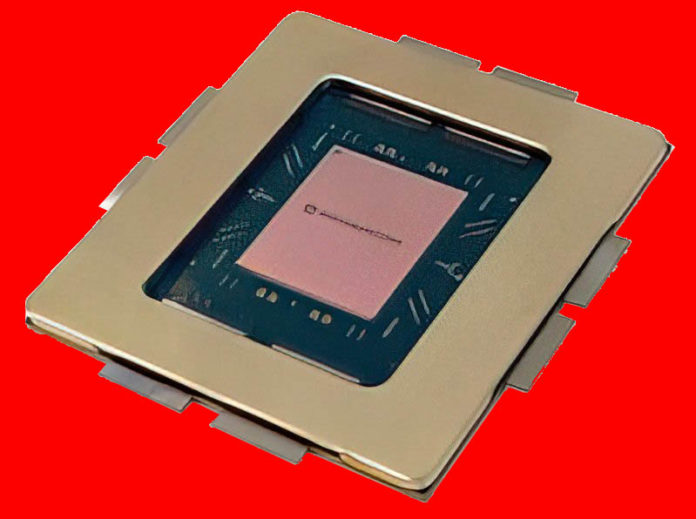

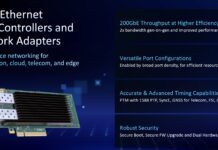
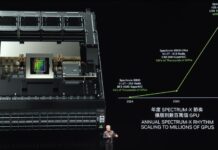
This is the future. High speed networking needs this now but it’ll spread widely for other applications like processor-to-processor links.
Copackaged optics is also why I see the DPU concept being a relatively short term niche as servers will start to include their own copackaged optics next to main processors on a faster bus than what PCIe can provide.